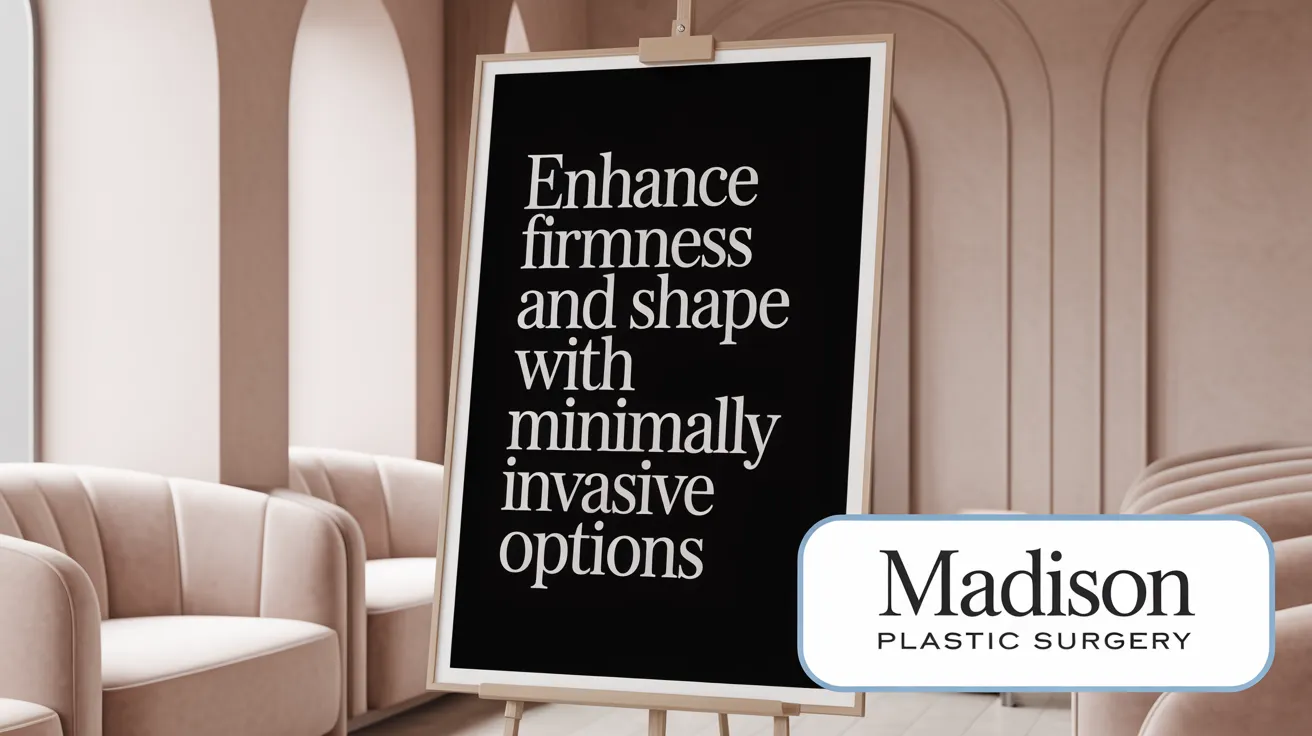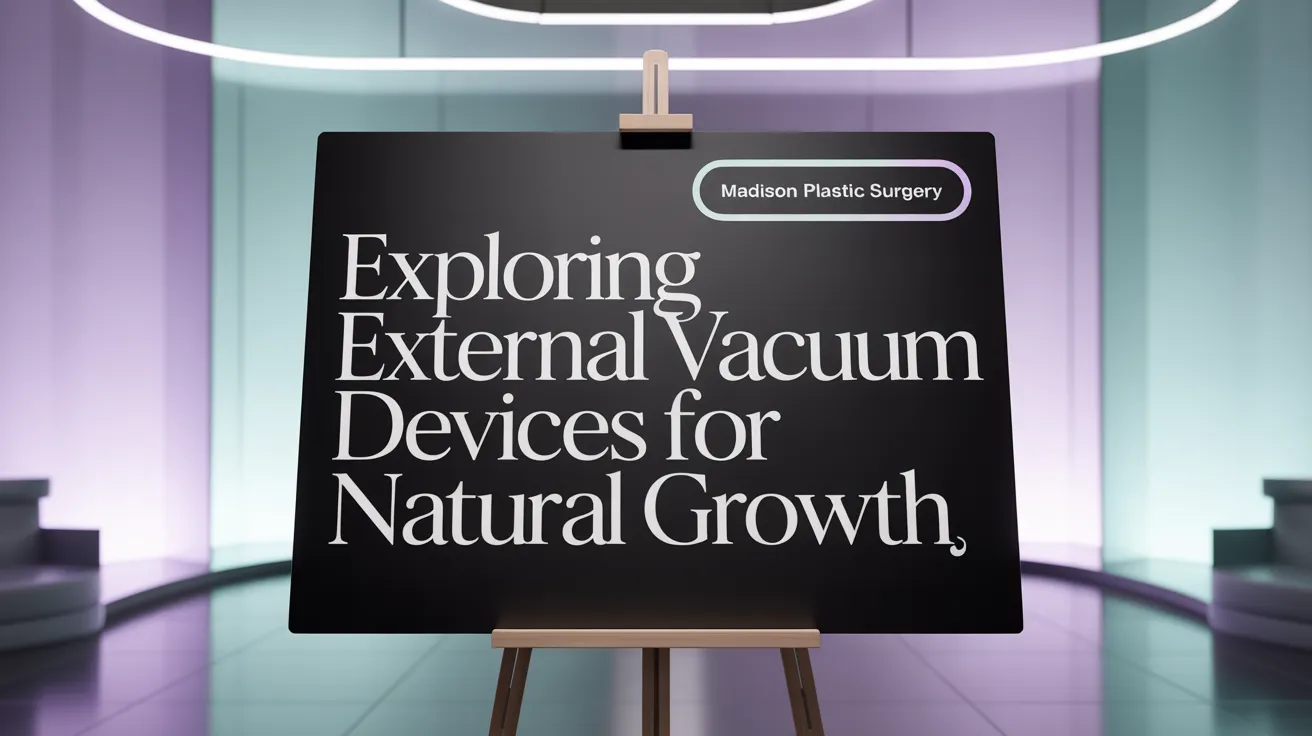Understanding Non-Surgical Breast Enhancement
Overview of Non-Surgical Breast Enhancement
Non-surgical breast enhancement encompasses a variety of techniques designed to improve breast appearance without incisions or implants. This includes natural methods such as herbal supplements, targeted chest exercises, breast massage, and using specialized bras. Additionally, medical procedures like fat transfer, radiofrequency treatments, and platelet-rich plasma (PRP) injections offer minimally invasive options that can add volume or lift.
Basic Concepts and Limitations of Natural Methods
Natural approaches, including the use of supplements with herbs that mimic estrogen (e.g., fenugreek, saw palmetto), breast massage, and chest-strengthening exercises, primarily aim to enhance breast firmness and the underlying muscle tone rather than increase breast tissue size significantly. They generally promote overall breast health and appearance but lack strong scientific evidence supporting actual breast growth.
Dietary choices incorporating phytoestrogens found in soy and flaxseeds may support hormonal balance but do not reliably change breast size. Similarly, creams and serums can provide temporary skin firmness but do not induce lasting volume changes. Supportive padded or push-up bras offer an immediate visual enhancement, with no tissue alteration.
Distinction Between Natural Approaches and Medical Procedures
Medical non-surgical options such as fat transfer breast augmentation—using the patient's own fat to add subtle volume—and radiofrequency-based scarless breast lifts offer more predictable results. These procedures can produce modest volume increase and tissue tightening with minimal downtime and without implants or visible scars.
However, such interventions have their own limitations, including limited achievable volume (often about one cup size), potential need for multiple sessions, and varying fat retention in fat transfer. These methods are best suited for patients seeking natural-looking, subtle augmentations rather than dramatic size changes.
In summary, non-surgical breast enhancement ranges from natural lifestyle and topical methods to advanced minimally invasive medical techniques. Understanding their scope and constraints is essential for realistic expectations and optimal outcomes.
Natural and Lifestyle Methods for Breast Enhancement

Do natural supplements and herbs effectively enhance breast size?
Natural supplements such as fenugreek, saw palmetto, and wild yam are widely marketed for breast enhancement, believed to mimic estrogen’s effects to promote breast tissue growth. However, robust scientific evidence validating these claims is lacking. While these herbal supplements are generally considered safe if used cautiously, their efficacy remains unproven, and potential interactions with medications pose safety concerns. Consulting a healthcare provider before use is advisable to avoid hormonal imbalances or adverse health effects. For more information, see Natural breast enhancement and Natural supplements for breast growth.
Can diet and exercise influence breast size naturally?
Dietary intake of phytoestrogens found in foods like soy, flaxseeds, and chickpeas, alongside maintaining hydration and a balanced lifestyle, supports overall breast health but does not significantly increase actual breast size. Exercises focusing on chest muscles—such as push-ups, chest presses, and flies—strengthen and tone the pectoral muscles beneath the breasts, improving contour and lift. While these workouts enhance the shape and firmness of the bust area, they do not stimulate growth of breast glandular or fatty tissue. Refer to Chest exercises for breast toning and Diet and hydration for breast health for details.
Are creams, massage, and specialized bras effective for breast enhancement?
Topical breast creams and serums containing plant extracts and collagen may temporarily improve skin tightness and texture, contributing to the firmness of the breast area. Regular breast massage can enhance blood circulation and lymphatic drainage, potentially promoting tissue firmness and overall breast health. However, these effects are subtle and transient. Specialized bras with padding or push-up features effectively create the visual illusion of larger, fuller breasts but do not induce lasting tissue changes. Proper bra fit is important for comfort and breast support. Further reading on Breast enhancement creams and serums and Enhancing bras for fuller appearance can be helpful.
Together, these natural and lifestyle approaches serve as supportive means to maintain breast health and enhance appearance subtly. Nevertheless, they do not substitute for surgical or medical methods when substantial, lasting breast size increase or lifting is desired.
Fat Transfer: A Natural Surgical Alternative to Implants

What is fat transfer breast augmentation and how is the procedure performed?
Fat transfer breast augmentation is a surgical technique that uses liposuction for fat harvesting to extract fat from donor areas such as the hips, abdomen, thighs, or flanks. The extracted fat undergoes processing to purify viable fat cells before being carefully injected in small, precise amounts into the breasts. This approach enables a natural breast augmentation procedure that enhances breast volume without introducing foreign implants.
What volume increase and recovery timeline can patients expect?
Typically, fat transfer achieves a subtle to moderate increase in breast size—generally about one cup size. Recovery involves managing soreness, bruising, and swelling at both donor and recipient sites, with most patients returning to office work within 3 to 7 days. The recovery after natural breast augmentation timeline includes post-procedure care to minimize complications and optimize results.
Who is an ideal candidate and how does fat transfer compare to implants?
Candidates are healthy individuals with sufficient fat stores seeking a modest volume increase or correction of asymmetry. Compared to traditional implants, fat transfer offers a more natural look and feel, minimizing risks such as implant rupture or capsular contracture in breast implants. However, it does not provide the dramatic size increases achievable with implants and cannot correct significant breast sagging. This technique has advantages without implants and is ideal for those avoiding implants.
What are the main risks and considerations regarding fat survival?
A proportion of transferred fat—ranging roughly from 20% to 40%—may be reabsorbed by the body over time, which can necessitate multiple sessions to attain the desired fullness. There are risks including fat necrosis after fat transfer breast augmentation, benign cysts, or calcifications that could complicate breast cancer screening, although serious complications remain rare when performed by an experienced surgeon. The risks of fat transfer breast augmentation include bleeding, bruising, fat cell death, infection risks, and mammogram interpretive issues.
Can fat transfer be combined with other procedures?
Yes, fat grafting can be adjunctive to breast lifts or follow implant removal to refine shape and restore volume. Combining procedures allows personalized outcomes tailored to the patient’s aesthetics and tissue characteristics. These combinations are well covered in resources on fat transfer in breast lift and breast volume restoration after implant removal.
What benefits distinguish fat transfer as a breast augmentation method?
By utilizing the patient's own fat, this technique avoids foreign materials, promotes a natural contour and texture, and additionally contours donor areas through liposuction. The procedure involves minimal scarring and tends to age gracefully with the body, appealing to patients seeking subtle and lasting breast enhancement with reduced surgical risks. Fat transfer breast augmentation offers natural breast enhancement benefits such as a natural look and feel, body contouring advantages, and suitability for those desiring implant alternatives.
Minimally Invasive Procedures for Breast Firmness and Lift

What minimally invasive procedures can improve breast firmness and lift without surgery?
Scarless breast lifts using advanced radiofrequency technologies such as BodyTite technology and ThermiBreast represent innovative, minimally invasive options to enhance breast firmness and provide a subtle lift without the need for surgical incisions or scars. These treatments work by precisely delivering radiofrequency energy beneath the skin, stimulating collagen production and tightening breast tissue. Ideal candidates are women experiencing mild to moderate breast sagging who desire firmer, more youthful-looking breasts yet prefer to avoid the downtime and visible scars of traditional surgery.
Fat grafting—or fat transfer breast augmentation is another minimally invasive option that offers natural volume enhancement. This technique involves harvesting fat through liposuction from donor areas like the abdomen or thighs followed by purification and careful injection into the breasts. It is especially suitable for women seeking a modest increase in breast volume or correction of asymmetry without implants.
What are the expected outcomes and recovery for these treatments?
Results from radiofrequency breast lifts generally appear as a natural, subtle lift and firmer breast contour that develops and improves over a period of months. Clinical experience indicates that these effects can last approximately two years or more, after which maintenance treatments may be considered.
Fat grafting provides immediate volume increase, with final results maturing over 3 to 6 months as transferred fat cells integrate. The volume gain typically ranges up to one cup size, focused on natural enhancement rather than dramatic enlargement.
Downtime is minimal across both therapies, with many patients returning to normal daily activities within a few days. Mild soreness or tenderness can occur but usually resolves quickly. Notably, these procedures are not replacements for surgical breast lifts in patients with significant sagging or those seeking large volume increases. Proper consultation with a board-certified plastic surgeon helps tailor treatment to individual goals and anatomy, ensuring personalized and refined aesthetic results.
Non-Invasive and External Devices for Breast Enhancement

How do external vacuum devices work for breast enlargement?
External vacuum suction devices, such as the BRAVA system and similar apparatuses, function by applying controlled vacuum forces—typically around 20 mmHg—to the breast tissue. These suction forces are applied for prolonged daily durations, ranging from 10 to 12 hours, over a period of approximately 10 weeks. The sustained mechanical expansion encourages cellular growth and tissue remodeling, leading to a substantial increase in breast volume.
Magnetic resonance imaging studies demonstrate that such treatments promote proportional enlargement of both adipose (fat) and fibroglandular breast tissue without inflammation or edema. On average, breast size nearly doubles during the treatment period, with a stable, sustained increase of about 55% persisting long-term after discontinuation (Nonsurgical breast enlargement).
Are these methods safe and comfortable?
These vacuum expansion treatments are generally well-tolerated and avoid the inherent risks of surgical breast enhancement such as incisions, scarring, and anesthesia complications. Participants have reported high satisfaction levels, boosted self-esteem, and favorable comfort when wearing the devices during the treatment period.
The non-invasive nature significantly reduces adverse events, with no reported complications in clinical studies. However, partial rebound or size reduction occurs after treatment ends, although breast size remains measurably increased compared to baseline with no further decline during extended follow-up (Nonsurgical breast enlargement study.
While these devices offer a natural and scar-free approach, they demand considerable time commitment and patient compliance to achieve and maintain results. They are best suited for individuals seeking moderate, gradual enhancement over time without surgery (Non-surgical breast enhancement methods).
Emerging Non-Surgical Techniques: PRP and Injectable Options
What is the Vampire Breast Lift and how does it work?
The Vampire Breast Lift overview utilizes platelet-rich plasma (PRP) extracted from the patient's own blood. This PRP injection stimulates collagen and elastin production within the breast tissue, enhancing skin texture, firmness, and providing a subtle increase in breast fullness. Beyond volume, it helps reduce wrinkles, stretch marks, and scars, promoting a more youthful and natural breast appearance.
This minimally invasive procedure typically takes around 20 minutes, involves little to no downtime, and side effects such as bruising or swelling are usually short-lived. Results usually become visible within 2 to 3 months and may last up to two years, making it an appealing option for patients seeking gentle rejuvenation rather than dramatic size increases.
Are injectable fillers appropriate for breast enhancement?
Hyaluronic acid fillers for breast augmentation have been explored for breast augmentation due to their ability to add immediate and subtle volume. However, these fillers are not FDA-approved for breast use, and their application carries safety concerns and limited long-term efficacy data. Their effects last approximately 12 to 18 months, necessitating repeat treatments.
Due to these limitations, injectable fillers are cautiously employed and generally not recommended as a primary solution for breast enlargement. They are better suited to patients desiring minor contour refinements and who prioritize avoiding surgical treatments.
Suitability and safety considerations
Both Platelet-rich plasma (PRP) therapy for breast enhancement breast lifts and injectable fillers provide options for women who want subtle enhancements without the risks, recovery time, or scars associated with surgery. These treatments are best suited for individuals in good health who seek natural-looking improvements in breast tone and volume without significant augmentation.
Safety profiles for these non-surgical procedures are favorable, with mostly temporary and mild side effects. However, given the lack of extensive long-term studies, especially for fillers, patients should consult with experienced, board-certified plastic surgeons to thoroughly understand benefits, limitations, and realistic outcomes.
In summary, emerging non-surgical breast enhancement techniques like PRP injections offer promising, refined aesthetic improvements through collagen stimulation and mild volume increase, while injectable fillers provide immediate but temporary volume gains. These options complement a personalized approach to breast aesthetics for patients valuing subtlety and safety.
Practical Tips and Considerations for Non-Surgical Breast Enhancement

What should women consider when pursuing natural or non-surgical breast enhancement?
Women contemplating Non-surgical breast enhancement methods should approach with realistic expectations. Non-invasive methods such as herbal remedies for breast enhancement, massage, chest exercises for breast toning, and topical creams often provide at best modest and temporary improvements in breast fullness and firmness. Moreover, genetic factors in breast size and natural body factors strongly influence breast size and shape, limiting how much these approaches can alter appearance.
Safety is paramount. Consulting with qualified healthcare providers before starting supplements or unregulated products is vital, as some ingredients may interact adversely with medications or cause hormonal imbalances. Attention to proper product use and awareness of potential side effects like allergic reactions are important for minimizing risks, as discussed in safety and risks of non-surgical breast methods.
Lifestyle changes that support overall breast health—like a balanced diet and hydration for breast health, maintaining ideal body weight, and staying hydrated—can complement enhancement attempts but do not typically increase breast volume significantly.
How do non-surgical methods compare to surgical options?
Non-surgical breast enhancement methods provide subtle, natural-looking results with minimal risk, no scarring, and little to no downtime. Options such as Fat Transfer Breast Augmentation can modestly increase volume and improve shape but require careful patient selection and realistic goals. Other treatments like radiofrequency breast tightening or platelet-rich plasma (PRP) therapy for breast enhancement (Vampire breast lift) focus on tissue quality and firmness rather than size increase.
In contrast, surgical options like breast implants for enlargement or fat grafting for breast enhancement offer more significant and lasting volume enhancement. These procedures provide predictable outcomes but involve higher costs, longer recovery, and potential surgical risks such as infection or scarring.
Choosing between non-surgical and surgical methods involves weighing the desire for dramatic, permanent change against comfort with medical intervention and downtime. Many women opt for non-surgical routes to maintain a natural appearance and avoid surgical risks, accepting the trade-off of modest improvement.
| Aspect | Non-Surgical Methods | Surgical Methods | Notes |
|---|---|---|---|
| Volume Increase | Modest, often temporary | Significant, more permanent | Surgery generally needed for dramatic enlargement |
| Risk | Low to moderate; depends on treatment | Moderate to high; surgical risks apply | Supplements carry risk of drug interactions |
| Recovery | Minimal to none | Days to weeks | Non-surgical usually no downtime |
| Permanence | Temporary | Long-lasting | Fat transfer longevity varies |
| Impact of Genetics | Limits effectiveness | Can overcome some natural limitations | Natural size highly genetic |
| Cost | Lower to moderate | Higher | Surgery more costly but definitive |
Prioritizing patient safety and realistic expectations will ensure women choosing non-surgical breast enhancement enjoy natural-looking improvements while minimizing health risks.
Balancing Safety and Results in Natural Breast Enhancement
Overview of Non-Surgical Breast Enhancement Methods
Non-surgical options for breast enhancement commonly include fat transfer, radiofrequency treatments, and injectable therapies like PRP or fillers. Other approaches involve external vacuum devices, targeted chest exercises, herbal supplements, and enhancing garments. Each method offers subtle changes—fat transfer and radiofrequency can provide modest volume increases and improved firmness, while supplements and creams lack scientific backing for significant size growth.
Professional Guidance and Realistic Expectations
Consultation with a board-certified plastic surgeon or qualified healthcare provider is essential to select an approach best suited to your anatomy, health status, and aesthetic goals. Realistic expectations about attainable outcomes and potential risks help ensure patient satisfaction and safety, especially since some methods carry risks like hormonal imbalance or fat necrosis.
Informed and Personalized Care
Prioritizing personalized care and scientifically supported procedures safeguards patient well-being. Engaging in informed decision-making creates a balanced understanding of benefits and limitations, facilitating natural, elegant enhancements that restore confidence without compromising health.
